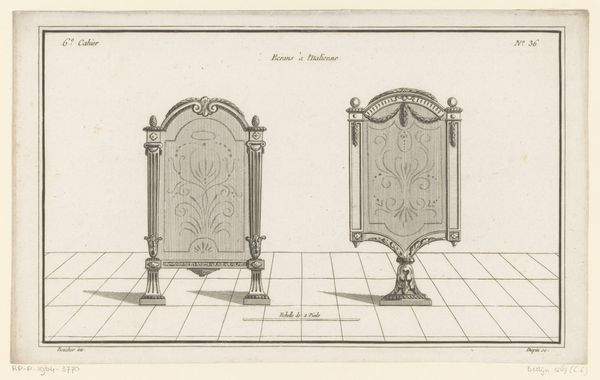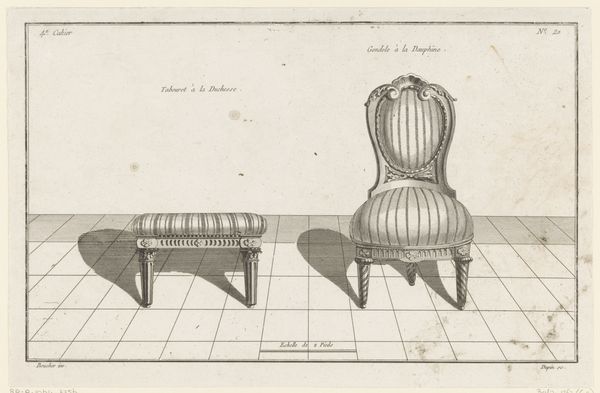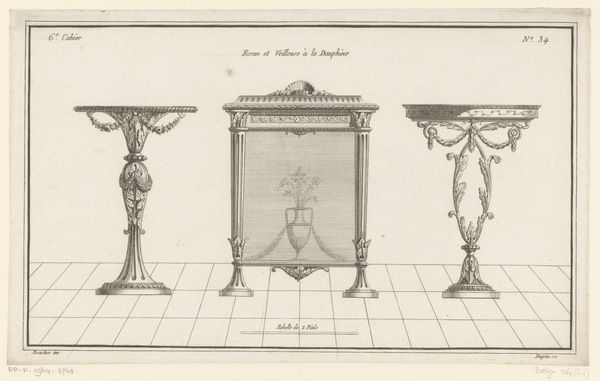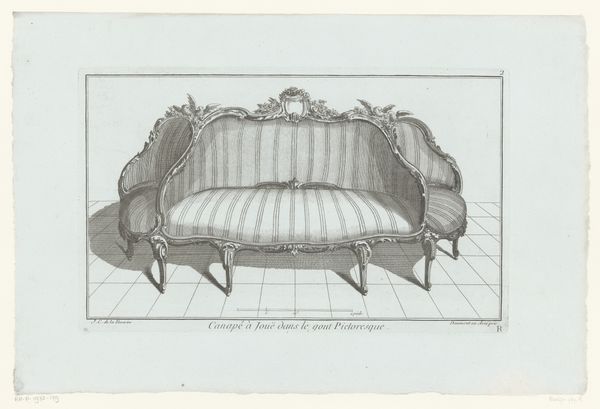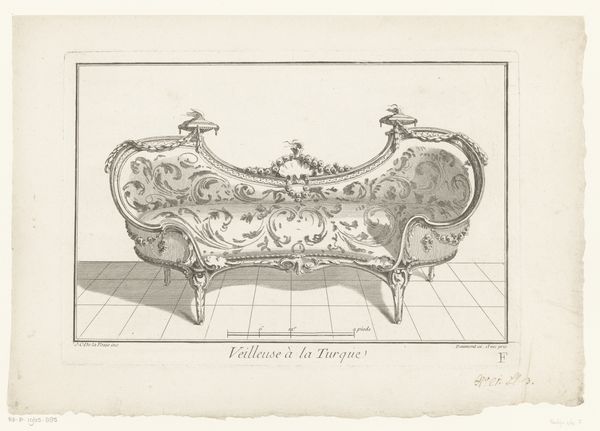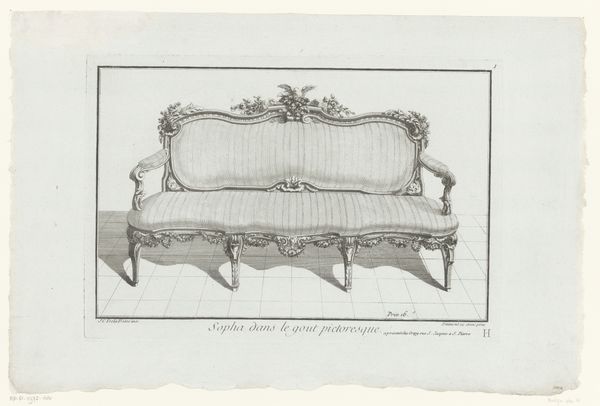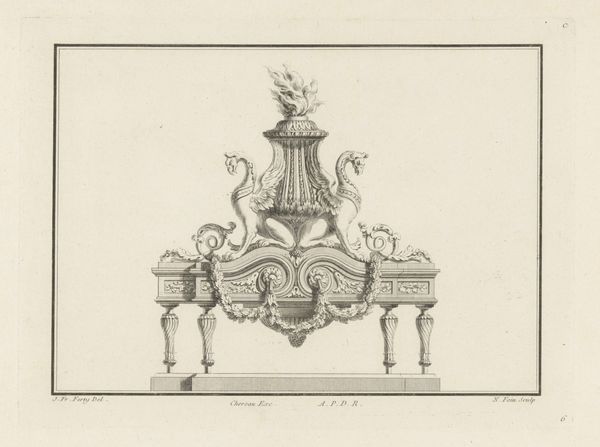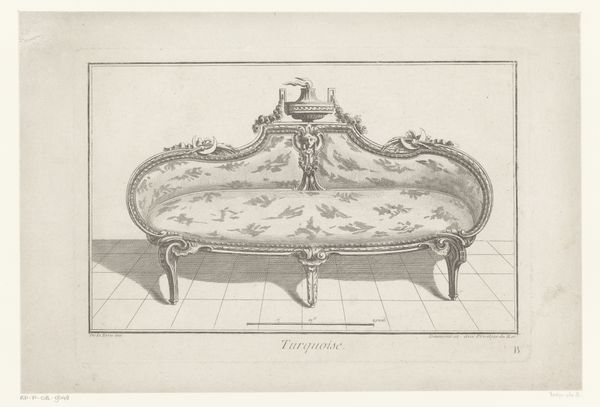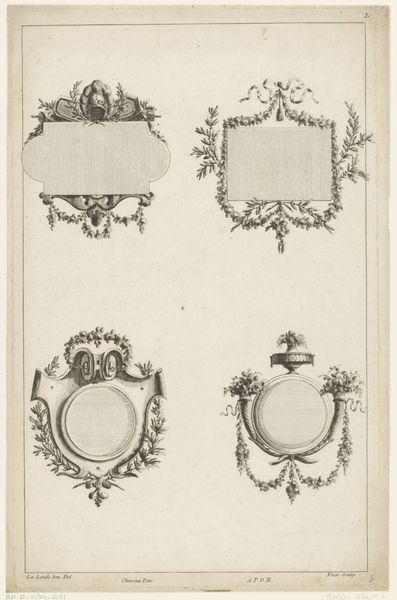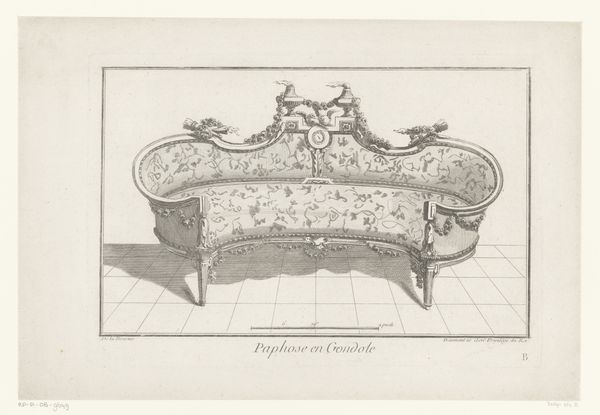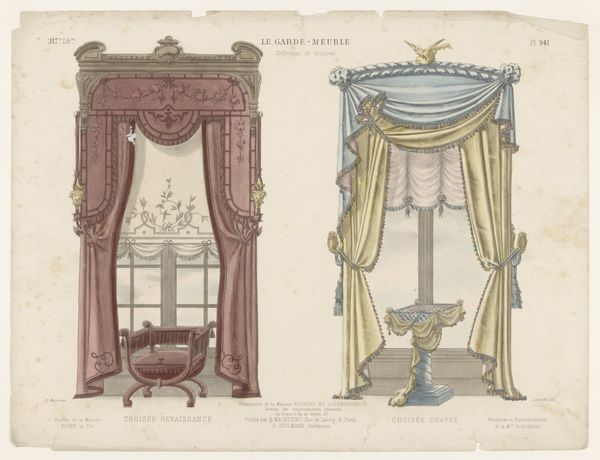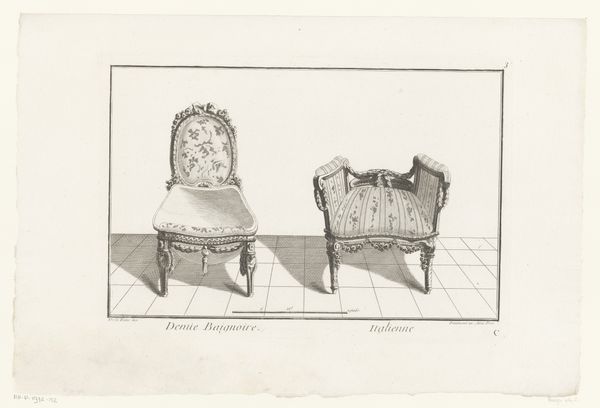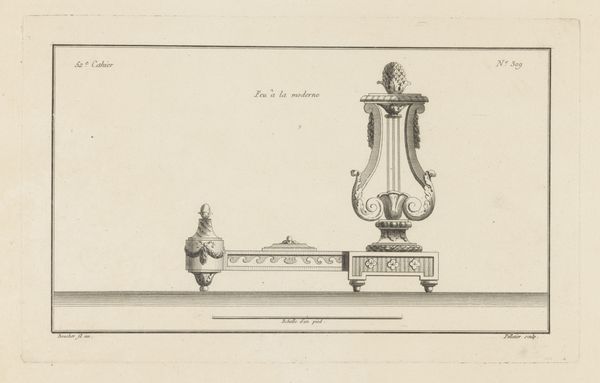
Dimensions: height 202 mm, width 318 mm
Copyright: Rijks Museum: Open Domain
Curator: My goodness, how meticulously rendered. What catches your eye first? Editor: Definitely the stark, almost sterile presentation of what are supposed to be decorative objects. It feels very… clinical, in a way that clashes with the Rococo flourishes. Curator: Yes, it's all laid out quite plainly. This engraving, created sometime between 1772 and 1779, depicts two designs for fire screens. Nicolas Dupin is credited as the creator. He was capturing the stylish spirit of the time! You can almost feel the Parisian salons and the flicker of candlelight, non? Editor: Absolutely. Though, thinking about fire screens… they represent a very specific kind of privilege. To be concerned about your complexion being affected by the heat of the fire implies a certain class position, doesn’t it? One entirely unconcerned with the labor that fuels that fire. Curator: That’s true. But look at the craftsmanship. The delicate swirls, the symmetry… it is very refined, particularly the screen *à l'antique*. I wonder what materials they envisioned… perhaps silk and mahogany? Editor: Materials that were themselves often the product of exploitation and colonial trade. We need to be attentive to whose labor made this lifestyle possible, and for whom such comfort was even imaginable. Curator: Point taken. Though, let’s give Dupin his due. The line work is beautiful. The way he renders light and shadow is masterly and manages to look so effortless. There is real skill here. Editor: Of course. And to appreciate that skill, we have to remember that art doesn’t exist in a vacuum. It is intertwined with social, political, and economic structures. By understanding this entanglement, we get a fuller, more critical experience of this object. Curator: I agree. The tension between beauty and its historical context is essential. These screens become little windows into the lives, luxuries, and the inherent inequalities of the late 18th century. Editor: Exactly. And hopefully, these critical conversations help us understand our present too.
Comments
No comments
Be the first to comment and join the conversation on the ultimate creative platform.
